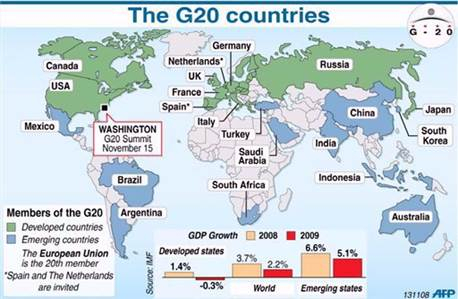Contents:
- Rajiv Gandhi Era
- G20 India Presidency
Rajiv Gandhi Era
Focus: Facts for Prelims
Why in News?
The Prime Minister, Shri Narendra Modi paid tributes to the former Prime Minister, Shri Rajiv Gandhi on his birth anniversary today.
About Rajiv Gandhi:
- Rajiv Gandhi served as the 6th Prime Minister of India from 1984 to 1989.
- He became Prime Minister following the assassination of his mother, Prime Minister Indira Gandhi.
- During his tenure, he introduced several initiatives and reforms aimed at modernizing the country and improving governance.
- Key aspects of his role are as follows:
- Technological Modernization: Rajiv Gandhi is often credited with initiating efforts to modernize India’s technology and communication infrastructure. He emphasized the importance of computerization and information technology, leading to the establishment of the Department of Electronics and the Computer Policy in 1984.
- Panchayati Raj: Rajiv Gandhi was instrumental in passing the 73rd and 74th Amendments to the Indian Constitution, which led to the decentralization of power through the establishment of Panchayati Raj institutions (local self-governance bodies) in rural and urban areas. This move aimed to empower local communities and promote grassroots democracy.
- Anti-Defection Law: The 52nd Amendment to the Indian Constitution, known as the Anti-Defection Law, was enacted during Rajiv Gandhi’s tenure. This law aimed to curb political defections by setting rules for disqualification of elected representatives who switched parties.
- Foreign Policy: Rajiv Gandhi’s foreign policy focused on improving relations with neighboring countries and strengthening ties with global powers. He played a role in mediating the Sri Lankan conflict and signed the Indo-Sri Lanka Accord in 1987 to address Tamil grievances in Sri Lanka.
- 1984 Anti-Sikh Riots: Rajiv Gandhi’s tenure was marred by the tragic events of the 1984 anti-Sikh riots following the assassination of Indira Gandhi by her Sikh bodyguards. Many Sikhs were targeted and killed in the violence that followed.
- Economic Reforms: While Rajiv Gandhi initiated some economic reforms, such as the removal of license requirements for several industries, his tenure did not witness the more extensive economic liberalization that occurred in the early 1990s under the leadership of Prime Minister Narasimha Rao and Finance Minister Manmohan Singh.
- Election Loss and Legacy: In the 1989 general elections, the Congress party led by Rajiv Gandhi faced a significant defeat. Despite his contributions to modernization and certain reforms, his tenure was also criticized for issues like corruption and the Bofors scandal.
Rajiv Gandhi’s role in Indian history is complex and multifaceted, encompassing both achievements and challenges. His legacy continues to be a subject of discussion and analysis in Indian political circles.
G20 India Presidency
Focus: GS II: International Relations
Why in News?
The G20 Health Minister’s Meeting concludes in Gandhinagar, Gujarat recently.
Key points:
Aim: To consolidate and amplify recent and past gains in global digital health for health systems while strengthening mutual accountability to enhance the impact of future investments in healthcare.
The meeting concluded with the adoption of an Outcome Document, as well as the launch of the Global Initiative of Digital Health.
It stressed the importance to share expertise, resources, and strategies, to address global health challenges effectively.
About G20

- The G20 is an informal group of 19 countries and the European Union, with representatives of the International Monetary Fund and the World Bank.
- The G20 membership comprises a mix of the world’s largest advanced and emerging economies, representing about two-thirds of the world’s population, 85% of global gross domestic product, 80% of global investment, over 75% of global trade and roughly half the world’s land area.
- The members of the G20 are Argentina, Australia, Brazil, Canada, China, France, Germany, India, Indonesia, Italy, Japan, Republic of Korea, Mexico, Russia, Saudi Arabia, South Africa, Turkey, the United Kingdom, the United States, and the European Union.
- Spain as a permanent, non-member invitee, also attends leader summits.
Structure and functioning of G20
- The G20 Presidency rotates annually according to a system that ensures a regional balance over time.
- For the selection of presidency, the 19 countries are divided into 5 groups, each having no more than 4 countries. The presidency rotates between each group.
- Every year the G20 selects a country from another group to be president.
- India is in Group 2 which also has Russia, South Africa and Turkey.
- The G20 does not have a permanent secretariat or Headquarters.
- The work of G20 is divided into two tracks:
- The Finance track comprises all meetings with G20 finance ministers and central bank governors and their deputies. Meeting several times throughout the year they focus on monetary and fiscal issues, financial regulations, etc.
- The Sherpa track focuses on broader issues such as political engagement, anti-corruption, development, energy, etc.
- Since 2008, the group convenes at least once a year, with the summits involving each member’s head of government.
Benefits of G20 summit:
- Various programmes to be brought by the upcoming G20 summit can benefit India in the following ways:
- Limiting climate change issues
- Opening up gateways for renewable energy
- Development in technological knowhow
- Channelizing the sources of power generation
- Creating a mechanism to withstand sudden challenges.
- The G20 Presidency has provided a ripe time for India to emerge as a perfect choice not only for manufacturing and assembling in the economic arena but also for being the perfect partner globally in myriad areas.





